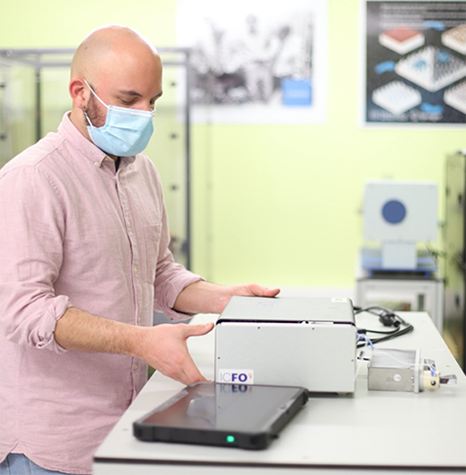Researchers at the Institute of Photonic Sciences in Barcelona, Spain, have created a microfluidic chip that can detect the SARS-CoV-2 virus in less than 30 minutes, and with a similar level of accuracy as the current gold-standard test, PCR. The technology combines the speed of antigen tests with the accuracy of PCR and may be useful for point-of-care testing. The technique involves combining a few drops of saliva with fluorescent antibodies against the virus. Then, the saliva sample is passed through a microfluidic channel, where a laser illuminates bound fluorescent antibodies and an optical detector rapidly assesses if the virus is present.
While the current global wave of the omicron COVID-19 variant is relatively mild in terms of severe disease and death, another more serious variant may be around the corner, and researchers are reluctant to assume that new technologies to identify and fight the virus are not required. Moreover, another viral pandemic is sure to happen sooner or later, and developing platform diagnostic and therapeutic technologies will mean we are better prepared for the next one.
In this light, these researchers have unveiled a new COVID-19 test that combines the speed of antigen tests with the accuracy of PCR. The test, which the researchers have described as a flow virometer, does not require an uncomfortable nasal swab, and will work with just two drops of saliva.

“The device uses a couple of drops of saliva and fluorescent light markers. When saliva is collected from the saliva of a patient’s mouth, we introduce it into a solution that contains fluorescent antibodies. If the saliva contains any presence of viral particles, the fluorescent antibodies will attach to the virus,” said Rubaiya Hussain, a researcher involved in the study. “The reader collects the sample and sends it into a microfluidic channel that will pass through a laser illumination detection set-up. The laser illuminates the sample and if there is presence of viral particles, they will emit a unique enhancement of the fluorescence signal. In less than 1 minute, the reading translates into peaks in our graph and alerts the system that the sample is a positive.”
So far, the researchers have tested the technology with 50 patients, and have shown that it has a specificity of 90% and a sensitivity of 91.2%, which is similar to PCR. However, the test is faster and easier to perform than PCR.
Finally, the technology may be useful for other pathogens. “Our device is very versatile,” said Ewelina Wajs, another researcher involved in the study. “By selecting proper antibodies, this technology could also be adapted for the detection of other viruses, such as seasonal coronavirus or influenza virus, or even microorganisms in water, such as Legionella and E-coli, with a very fast response time, with respect to gold standards relying on culture.”
See a video about the device below.
Study in Biomedical Optics Express: Small form factor flow virometer for SARS-CoV-2
